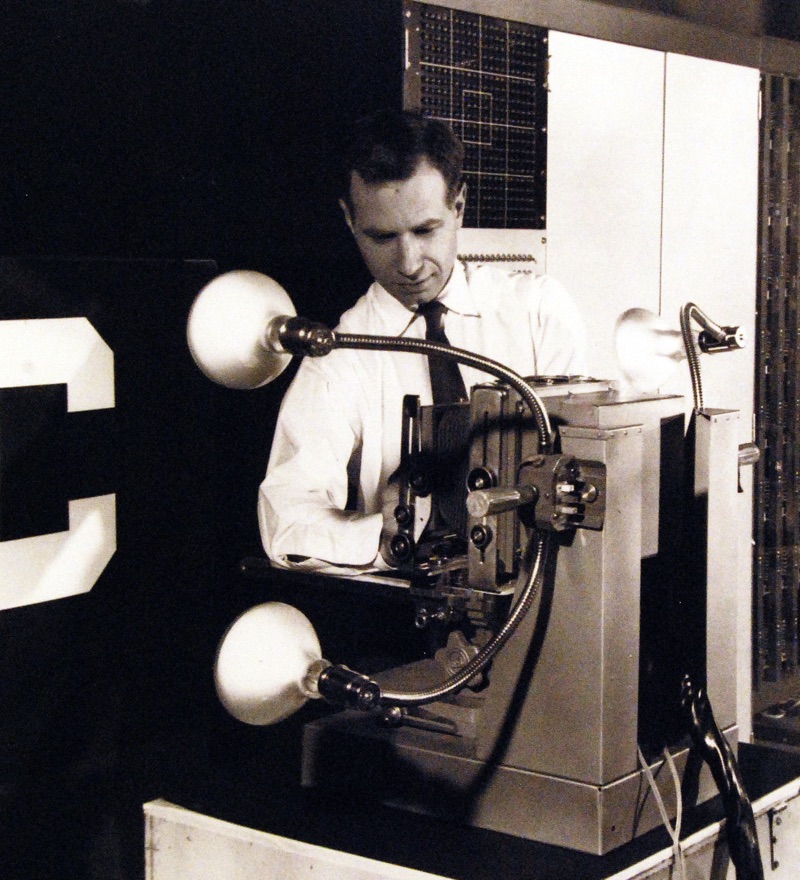The Perceptron: A Revolutionary Invention in Artificial Intelligence and Its Inventor, Frank Rosenblatt
The perceptron, an early artificial neural network algorithm, was a groundbreaking invention that significantly influenced the field of artificial intelligence (AI). Developed by American psychologist and computer scientist Frank Rosenblatt in the late 1950s, the perceptron marked the beginning of machine learning and laid the foundation for future developments in AI. In this essay, we will explore the technical environment in which the perceptron was created, how it worked, and the impact it had on science and the world.

Frank Rosenblatt: The Inventor of the Perceptron: Frank Rosenblatt was born on July 11, 1928, in New Rochelle, New York. He earned his bachelor's degree in psychology from Cornell University in 1950 and later obtained his Ph.D. in psychology from the same institution in 1956. Rosenblatt's interest in the intersection of psychology and computer science led him to work at the Cornell Aeronautical Laboratory (CAL) in Buffalo, New York, where he began his pioneering work on artificial neural networks.
The Technical Environment: During the 1950s, the field of artificial intelligence was in its infancy, and researchers were exploring various approaches to simulate intelligent behavior in machines. Early AI research was primarily focused on symbolic approaches, which involved the manipulation of symbols and logical reasoning to solve problems. However, Rosenblatt was more interested in the idea of creating machines that could learn and adapt, inspired by the biological processes observed in the human brain.
The perceptron was conceived in this context, as Rosenblatt sought to develop an algorithm that could mimic the learning processes of biological neurons. His work was influenced by earlier research on artificial neurons by Warren McCulloch and Walter Pitts, who had developed a simple mathematical model of a neuron in 1943.
How the Perceptron Worked: The perceptron is a type of linear classifier that can be used to classify data into two distinct categories. It consists of an input layer, which receives the data, and an output layer, which generates a binary classification decision. The input layer is connected to the output layer through a set of weighted connections, which are adjusted during the learning process.
The perceptron algorithm works by iteratively updating the weights of the connections based on the difference between the predicted output and the actual output. When the perceptron is presented with a set of input data, it computes a weighted sum of the inputs and compares this sum to a threshold value. If the sum is greater than the threshold, the perceptron outputs a positive classification decision; otherwise, it outputs a negative classification decision.
The perceptron learning rule involves updating the weights of the connections whenever the algorithm makes an incorrect prediction. The weights are adjusted in the direction that minimizes the error between the predicted and actual outputs. This learning process continues until the perceptron can correctly classify all the data in the training set or a predetermined number of iterations have been completed.
Impact on Science and the World: The invention of the perceptron had a profound impact on the fields of artificial intelligence and machine learning. It demonstrated that it was possible to create machines capable of learning from data, thus challenging the traditional symbolic approaches to AI. The perceptron also inspired the development of more advanced artificial neural network models, such as the multilayer perceptron, which can learn to solve more complex problems.
Despite the initial excitement surrounding the perceptron, its limitations became apparent in the 1960s. Researchers Marvin Minsky and Seymour Papert published a book titled "Perceptrons," which highlighted the inability of the single-layer perceptron to learn certain types of problems, such as the XOR function. This critique led to a decline in interest in neural networks and a shift in focus towards other AI approaches, such as expert systems and rule-based systems. This period, known as the "AI winter," saw a reduction in funding and research in artificial neural networks.
However, the perceptron's legacy was far from over. In the 1980s, the field of neural networks experienced a resurgence, largely due to the development of the backpropagation algorithm, which enabled the training of multilayer perceptrons. This revitalized interest in neural networks and machine learning led to significant advancements in the field and eventually paved the way for modern deep learning techniques.
The impact of the perceptron on the world has been substantial. As one of the pioneering algorithms in artificial intelligence and machine learning, it laid the groundwork for the development of more sophisticated models that are now used in various applications, such as image and speech recognition, natural language processing, and autonomous vehicles. The perceptron and its descendants have revolutionized the way we interact with technology, enabling machines to learn from data and make intelligent decisions.
Conclusion: The perceptron, invented by Frank Rosenblatt, marked a significant milestone in the history of artificial intelligence and machine learning. Although it had its limitations and faced criticism, the perceptron inspired a new way of thinking about intelligent machines, ultimately leading to the development of more advanced artificial neural network models. The impact of the perceptron on science and the world has been profound, as it has transformed our understanding of machine learning and paved the way for numerous technological advancements that have shaped the modern world. The legacy of Frank Rosenblatt and his perceptron continues to influence the field of artificial intelligence, as researchers and engineers build upon his groundbreaking work to develop increasingly sophisticated learning algorithms and applications.